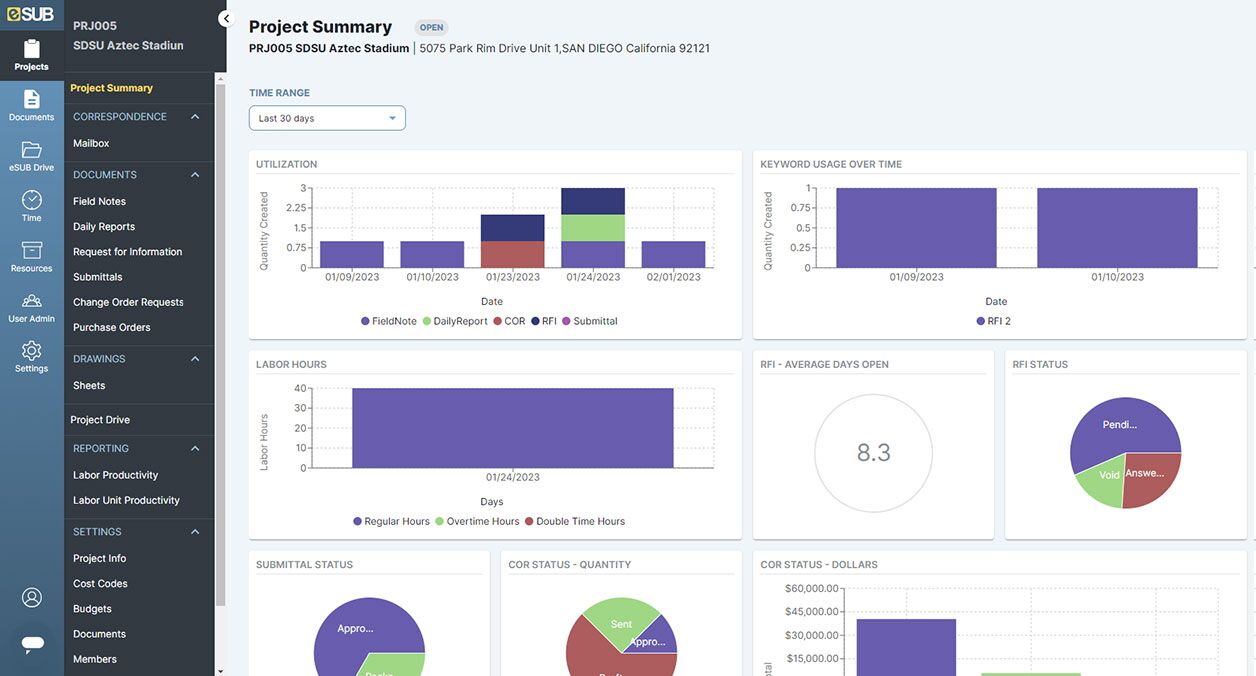Construction Software for Effective Project Preparation and Implementation
Construction Software for Effective Project Preparation and Implementation
Blog Article
Customized Building And Construction Monitoring Software Program: Optimizing Source Allowance and Budgeting Methods
In the world of contemporary construction management, the value of customized software application services can not be overstated. These sophisticated tools supply a nuanced technique to enhancing resource appropriation and budgeting methods, vital components for effective task execution. By diving right into the complexities of how such software program can improve resource allowance methods and improve budget plan optimization techniques, a clear path toward increased project performance emerges. In this electronic age where precision and performance reign supreme, discovering the impact of customized construction monitoring software application on these vital elements reveals a realm of possibilities that might form the future of the market.
Advantages of Tailored Software Application Solutions
Customized software application services offer a myriad of advantages to construction monitoring companies seeking to enhance efficiency and simplify procedures. By tailoring software remedies to resolve job monitoring, organizing, budgeting, and resource allocation, companies can enhance their workflows and achieve better efficiency.
Another benefit of tailored software remedies is the ability to give real-time insights and analytics. Construction monitoring firms can leverage data-driven decision-making to keep an eye on project progress, recognize bottlenecks, and make modifications without delay. This proactive strategy enhances job outcomes and aids firms remain on track with timelines and budget plans.

Enhanced Source Allocation Techniques
Applying efficient source appropriation methods is critical for construction administration companies to maximize project results and take full advantage of performance. Boosted resource allotment approaches entail strategically designating workers, tools, and products to specific tasks to make sure optimum utilization of resources. One essential element of improved source appropriation is the ability to accurately forecast project demands and assign sources as necessary. By leveraging building and construction monitoring software that offers real-time tracking and reporting features, firms can dynamically adjust allocations as project needs evolve, resulting in boosted performance and cost-effectiveness.
Moreover, improved resource appropriation approaches enable construction companies to determine and address possible bottlenecks or source restrictions proactively. By conducting normal analyses of source usage and efficiency metrics, managers can make data-driven choices to redistribute sources successfully and prevent hold-ups. This proactive strategy not only boosts project timelines yet additionally minimizes the risk of budget plan overruns as a result of ineffective resource allocation.
Budget Optimization Strategies
To accomplish optimal economic efficiency in building and construction projects, efficient spending plan optimization methods play a crucial function in making certain cost control and job success. One key method is the facility of an in-depth project spending plan that allocates sources based upon priority and essential needs. By clearly specifying the extent of work, setting reasonable price estimates, and constantly tracking expenditures, construction supervisors can determine potential expense overruns beforehand and take corrective actions. Furthermore, implementing value design techniques can aid streamline project expenses without jeopardizing high quality. This entails assessing each task component to identify opportunities for cost financial savings while maintaining performance standards. Additionally, leveraging historical data and industry criteria allows building managers to make educated decisions about budget allowances and identify areas where investing can be maximized. By integrating these budget optimization strategies right into building management software, task stakeholders can enhance financial preparation, resource allocation, and total budget plan administration to drive project success and productivity.

Impact on Task Efficiency
Optimizing building management software can dramatically boost job effectiveness by improving communication, enhancing collaboration, and Get the facts helping with data-driven decision-making. Additionally, building and construction administration software can offer beneficial understandings through information analytics, allowing job managers to make educated choices quickly and accurately.
Additionally, the automation of routine jobs such as organizing, spending plan monitoring, and source allocation can liberate important time for project teams to concentrate on essential tasks, inevitably speeding up task shipment. The capacity to check job progress in real-time and determine prospective traffic jams enables aggressive analytic, stopping concerns from intensifying and creating hold-ups. In general, the impact of customized construction management software on project effectiveness is undeniable, providing a competitive advantage by optimizing operations and optimizing efficiency.
Future Trends in Building Software Program
As the building market remains to advance, innovations in technology are shaping the future landscape of building software services. One significant trend coming up is the raising integration of fabricated intelligence (AI) and equipment understanding abilities in building software. These modern technologies have the prospective to change how construction tasks are taken care of by making it possible for anticipating analytics, automated decision-making processes, and improved task insights.
One more future fad in construction software is the growing focus on cloud-based solutions. Cloud innovation provides increased versatility, scalability, and access for construction teams, enabling real-time cooperation and information sharing across project stakeholders. This change in the direction of cloud-based software is expected to enhance job efficiency, simplify interaction, and enhance overall job end results.
In addition, the increase of Structure Information Modeling (BIM) is expected to proceed shaping the construction software landscape. BIM software application helps with 3D modeling, visualization, and data monitoring, leading to boosted project coordination, decreased mistakes, useful reference and boosted why not find out more job end results. Accepting these future patterns in construction software application will certainly be important for firms looking to stay affordable and drive development in the sector.
Final Thought
In conclusion, tailored building administration software program supplies various benefits such as improved source allotment approaches and spending plan optimization techniques. This software application has a substantial influence on project effectiveness by simplifying procedures and enhancing overall efficiency (evolve construction). As modern technology proceeds to advance, future fads in building and construction software program are expected to additional optimize source allocation and budgeting strategies for building projects
Report this page